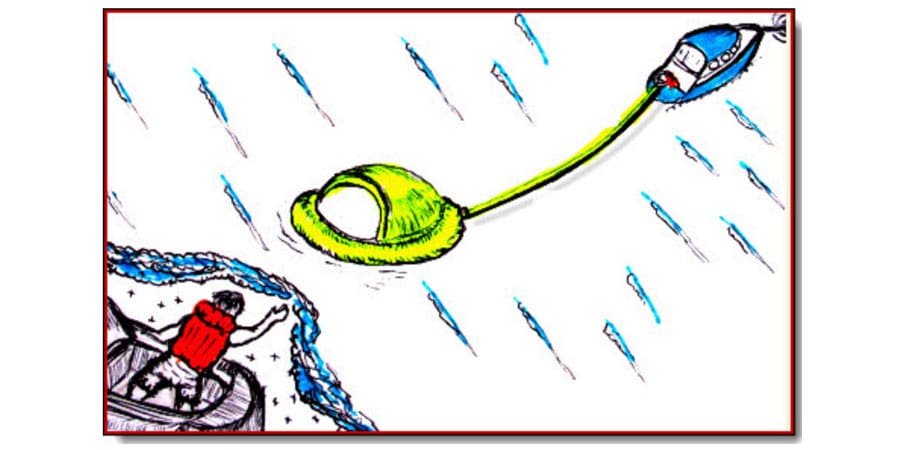Sailing Skipper’s Guide to “Rendering Assistance”

Sailing safety begins with keeping your sailing crew and vessel safe and sound. And that includes when assisting another vessel in distress. You are obligated to offer assistance and may render assistance as long as it does not place your crew or vessel in danger. But it’s easy to get caught up in the moment…
Long ago, I was a US Coast Guard search and rescue small boat coxswain in Charleston, South Carolina. Late one afternoon, we received a call from a stranded vessel hard aground off of Charleston Lighthouse.
Within minutes, we were underway in our 40 footer. Soon, we arrived on scene to find the crew of a large power boat weary but unhurt. The boat was almost high and dry on a sand bar. And, it was in no danger. Winds were light and the sea flat as a pancake. This grounding was a minor inconvenience at most because high tide was hours away.
But this young whippersnapper–your humble author–wanted to play hero. So he took his rescue boat in as close as he dared and sent over a line. We took a strain and the line acted just like a spring line in a docking scenario. It “sprung” me onto the shoal. Red-faced and embarrassed, we ended up just as hard aground as our charge.
Their crew was–at the time–in the cockpit having cocktails. And, I bet, wondering what I was doing disturbing their cocktail hour. Needless to say, we were not invited to join in. Which brings me to the point of the tale.
You will be unable to assist another if you become incapacitated yourself. As in anchoring, always have an escape route planned in case things go wrong. Or, better yet, stand by the distressed vessel, keep your vessel clear of danger and maintain an open line of communications via radio or cell phone.
Offer to act as a liaison with the Coast Guard or rescue resources. In this way, you render valuable assistance and provide comfort. Does this mean you have fulfilled your obligation to render assistance? Yes, absolutely. If you have determined you can go no further without damage or injury to your crew or vessel, then that’s your call to make.
What if the other vessel needs gear or supplies (i.e. to patch a crack or hole)? Here’s one method we were taught as US Coast Guard Search and Rescue coxswains. Base your decision to use a technique like this on the environmental conditions, crew and vessel capabilities, and your proximity to danger. Always have an escape path.




